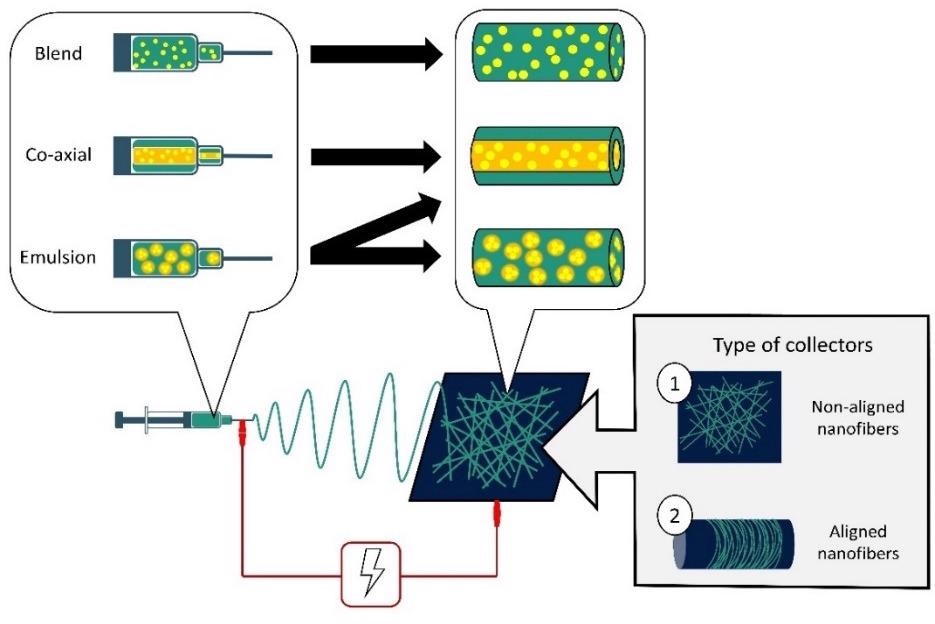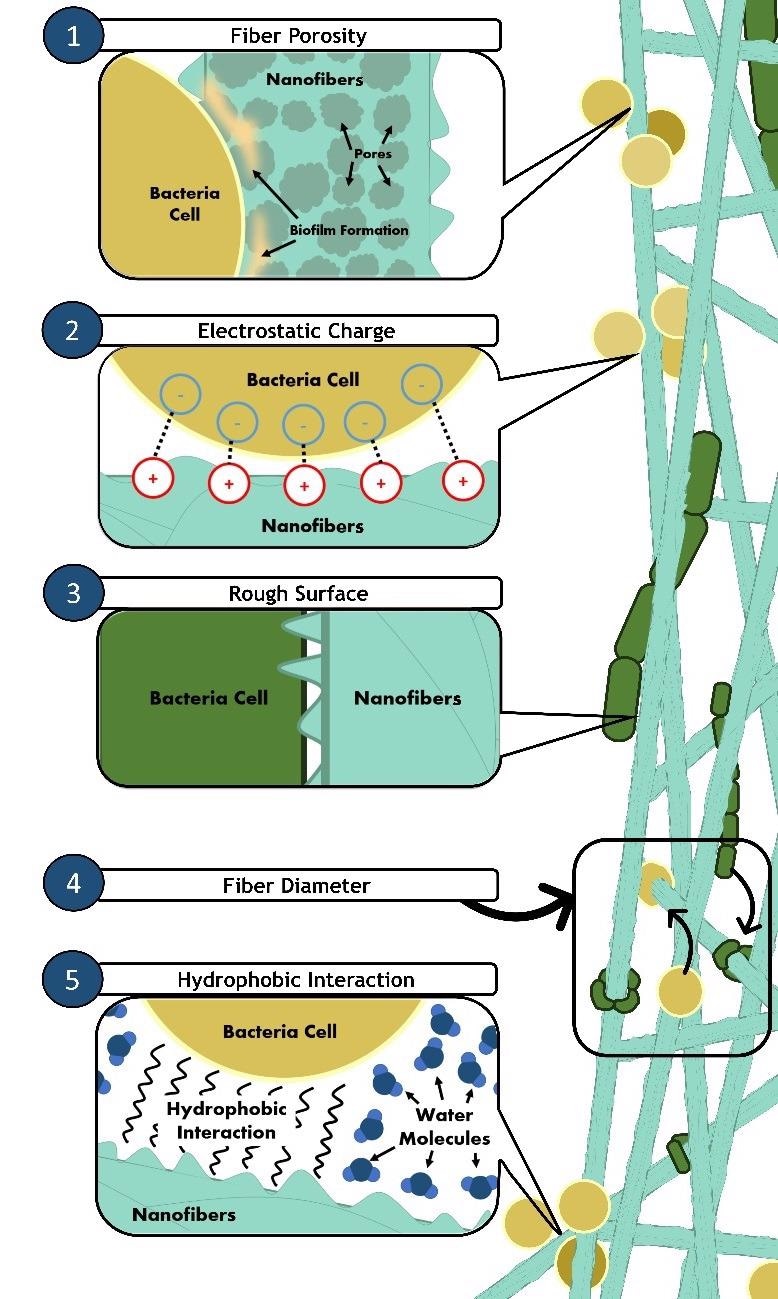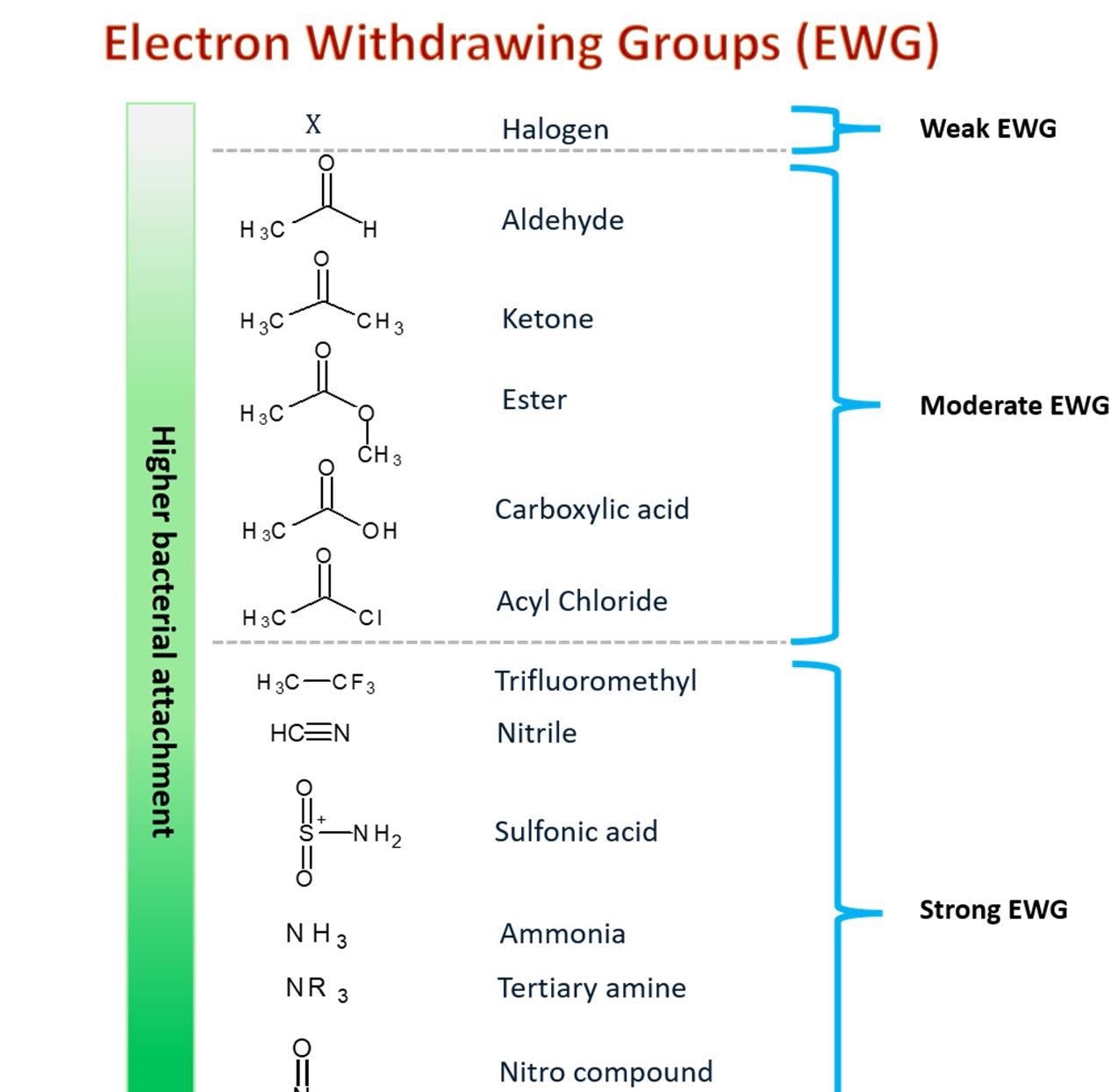Exciting new research published in the Journal of Functional Biomaterials aims to review, summarize and chart the future potential of multifunctional polymeric nanofibers in helping to address the issue of antibiotic resistance.

Study: Functionalized Antimicrobial Nanofibers: Design Criteria and Recent Advances. Image Credit: MAOIKO/Shutterstock.com
One of the most pressing threats to human health today stems from the increase in antibiotic resistance, as bacteria and fungi become resistant to the drugs designed to kill them. This global issue is leading to common, typically treatable infectious diseases being harder to manage, placing additional strain on health and medical services worldwide and resulting in increased mortality.
Antibiotic-resistant infections often necessitate extended hospital stays, further follow-up doctor visits, and expensive, frequently toxic alternative treatments prone to side effects.

Conventional antibiotics work by inhibiting bacteria’s cell walls, interfering with DNA, RNA, or essential proteins that bacteria need to survive. The issue lies in the resiliency and adaptability of bacteria, which can change their characteristics and structural properties to effectively reduce antibiotic efficacy.
As the number of multi‐drug‐resistant types of bacteria continues to grow, this issue will only worsen. Thankfully, nanotechnology offers a promising alternative as alternative antimicrobial therapy.
The research published in the Journal of Functional Biomaterials looks at how polymeric nanofibers’ unique structures and specific physicochemical properties can be used to target biofilms and better treat bacterial infections.
The review focuses on the use of electrospun polymeric nanofibers as a form of antimicrobial therapy, outlining a number of recommendations for improving these nanofibers’ therapeutic potential.
Electrospun polymeric nanofibers have a distinct size, shape, and surface chemistry, making them flexible enough to be easily adapted for antimicrobial therapy.
The use of polymeric nanofibers in conjunction with a drug cargo of antibiotics, therefore, has the potential to better kill bacteria and improve treatment efficacy. This is often achieved by using the nanofibers’ unique characteristics to improve sustained drug release.

Illustration of bacterial adhesion on nanofibers. Various properties of nanofibers can induce and enhance bacterial attachment. (1) Fiber porosity (nano‐sized) allows early biofilm formation, causing bacteria cells to attach easily onto highly porous nanofibers. (2) Nanofibers with a positive surface charge will also attract the negatively charged surface of bacterial cells. (3) Rough surfaces of nanofibers also provide more area of contact for bacteria cells to attach. (4) Thin fiber diameters (smaller than bacteria size) also allow changes in bacterial cells’ conformation. The surface wettability of nanofibers plays a significant role in bacterial adhesion. (5) Hydrophobic bacterial cells will adhere to the surface of hydrophobic nanofibers due to hydrophobic interactions. Image Credit: Hamdan N et al., Journal of Functional Biomaterials
The research reviews and highlights the impact of nanofiber properties on bactericidal interactions; for example, how the nanofibers’ morphology, wettability, surface charge, and functionalization may be optimized to afford them more efficient antimicrobial properties.
By understanding how nanofibers can be optimized in this way, the research aims to lay the foundations of approaches to finetuning and customizing these properties for maximum antimicrobial efficiency.
Antimicrobial nanofibers have already been developed and are seeing use in a range of different fields such as wound dressing, tissue repair and regeneration, nanomedicine, and even air and water filtering.
Wound dressing in particular is one area where nanomaterial‐based antimicrobials offer excellent potential as an alternative to antibiotics.
The research outlines how the design and manufacture of nanofibers plays a central role in their antimicrobial effectiveness, highlighting key properties including the nanofibers’ morphology (size, diameter, and porosity), their surface charge, and their surface wettability.
It is important to note, however, that neither nanofibers nor nanomaterials can kill or inhibit bacteria alone, and the use of antimicrobial agents is still necessary for improving this potential to leverage the antimicrobial properties of nanofibers. Rather, nanofibers offer excellent potential to support the delivery and release of these antimicrobial agents.
Nanofibers can be employed as a means of delivering a range of drug cargoes and therapeutic agents including antibiotics, metal nanoparticles, carbon materials, peptides, and natural extracts.
Using complex production methods, it is possible to incorporate these therapeutic agents directly into the nanofibers’ matrices.
The electrospinning process is cited as an excellent means of incorporating these drug cargoes and therapeutic agents, as well as customizing and optimizing their properties. This is because it is possible to finetune the morphological features of electrospun nanofibers by altering a range of processing or polymer solution parameters during the production process.
The researchers also present a number of recommendations for future studies to continue to develop this promising, potentially lifesaving area of work.

Electron withdrawing groups and functional moieties can be functionalized on nanofiber surfaces to improve bacterial adhesion and attachment. The stronger EWGs exhibit higher bacterial attachments. Image Credit: Hamdan N et al., Journal of Functional Biomaterials
They highlight the need for additional research into the interactions between nanomaterials and target bacteria, and the importance of interdisciplinary collaboration between the chemical, biological, and pharmacological fields in order to translate nanofiber designs into clinically viable therapeutic products.
There is a need for additional insight into the optimization of the complex nanofibers that may be required to help treat particularly resistant bacteria, and challenges remain around the feasibility of their large-scale production.
Despite these remaining challenges, a robust multidisciplinary approach aimed to design processes and material chemistry offers an excellent means of optimized, efficient, and highly effective drug cargo release and antimicrobial treatment.
Disclaimer: The views expressed here are those of the author expressed in their private capacity and do not necessarily represent the views of AZoM.com Limited T/A AZoNetwork the owner and operator of this website. This disclaimer forms part of the Terms and conditions of use of this website.
Sources:
Hamdan N, Yamin A, Hamid SA, Khodir WKWA, Guarino V. Functionalized Antimicrobial Nanofibers: Design Criteria and Recent Advances. Journal of Functional Biomaterials. 2021; 12(4):59. https://www.mdpi.com/2079-4983/12/4/59
Centers for Disease Control and Prevention, 2020, About Antibiotic Resistance, https://www.cdc.gov/drugresistance/about.html